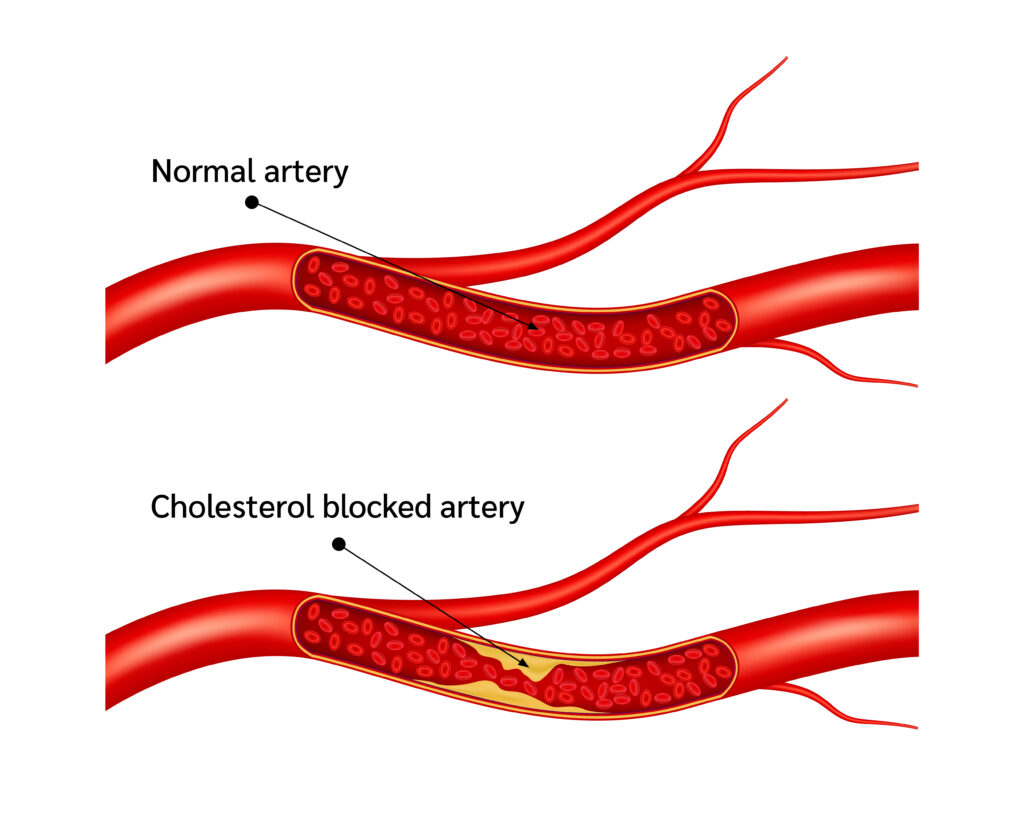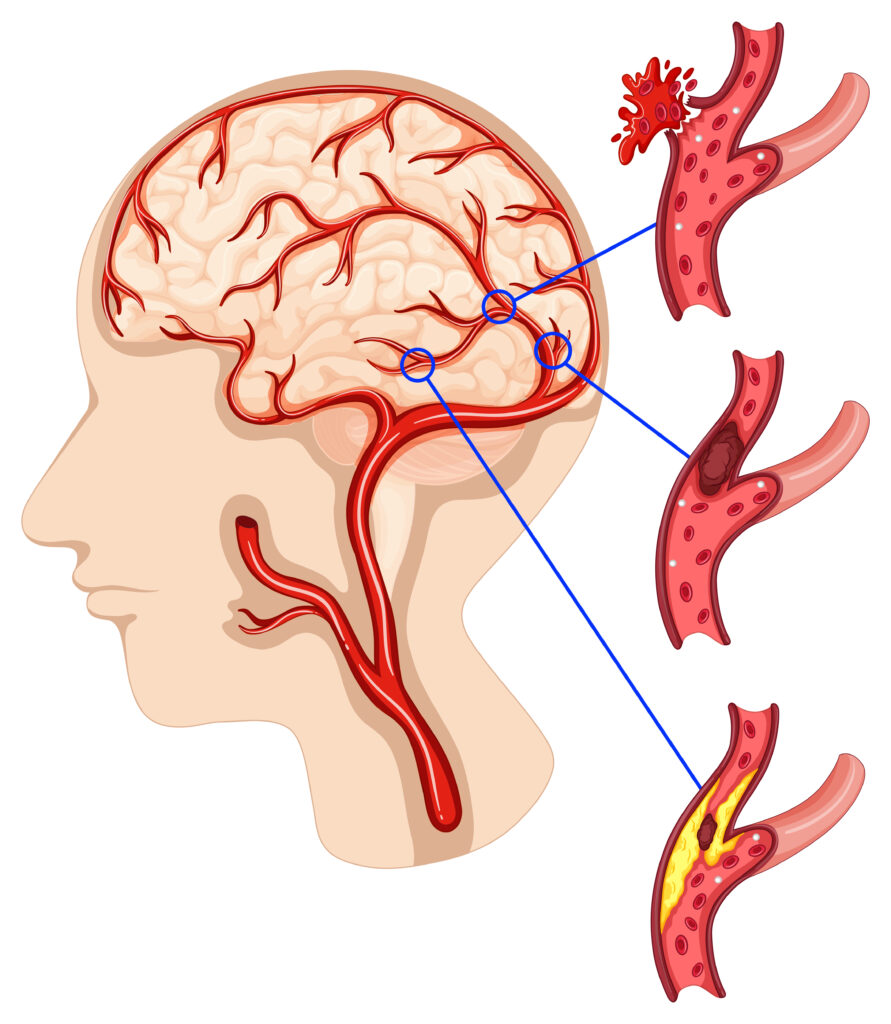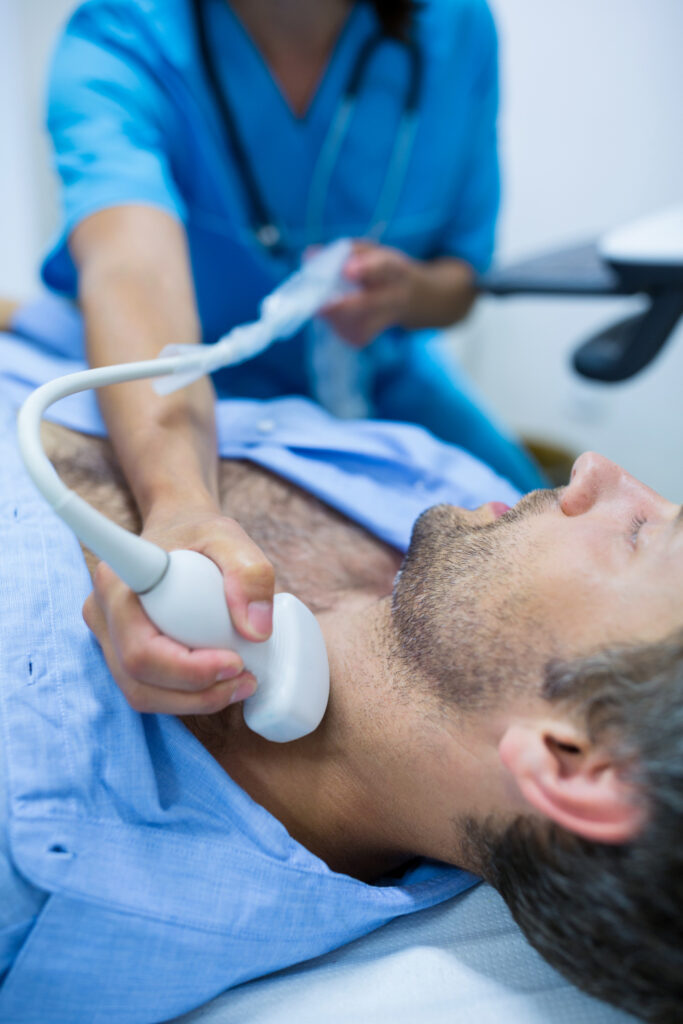Carotid Artery Disease (CAD)
Carotid artery disease is a condition in which the carotid arteries, which supply blood to the brain, become narrowed or blocked due to a buildup of plaque. This can cause a stroke, as well as other serious health problems such as loss of vision and tingling. Common risk factors for carotid artery disease include smoking, high cholesterol levels, diabetes, high blood pressure, and obesity. It is important for individuals to be aware of these risk factors so that they can take steps to reduce their chances of developing this disease.
Risk factors of Carotid Artery Disease:
- High blood pressure
- Family history of vascular disease
- Elevated cholesterol levels diabetes
- Smoking
- Obesity
- History of heart disease
- History of vascular disease

Carotid arteries further major blood supply to the brain. These arteries can become narrowed or blocked due to a process called atherosclerosis or hardening of the arteries. Atherosclerosis of the carotid arteries can occur as we get older, however certain factors will increase the chance of carotid artery disease.
Typically with age, the carotid arteries build up plaque, made up mostly of fat and cholesterol. Plaque narrows the insides of the arteries and makes them stiff. This process is commonly referred to as “hardening of the arteries,” or atherosclerosis. Carotid artery disease results when the carotid arteries become narrow or obstructed and provide a risk of the plaque traveling to the brain and causing a stroke.

Symptoms of Carotid Artery Disease
- There may be no symptoms in the early stages of carotid artery disease, and stroke could be the first sign of the condition.
- Stroke, however, typically has warning signs, referred to as mini-strokes or transient ischemic attacks {TIAs).
- Mini-stroke symptoms are usually temporary, lasting a few minutes to a few hours, and should be treated as serious medical emergencies requiring immediate treatment because they are strong predictors of future stoke.
- Some symptoms of stroke or TIA may include:
- Weakness, numbness, or tingling on one side of the body
- Inability to control movement of a body part
- Loss of vision or blurred vision in one or both eyes
- Inability to speak clearly
- Difficulty talking or comprehending what others are saying
Diagnosis of Carotid Artery Disease
If your doctor suspects carotid artery disease, it can be confirmed by going under a noninvasive duplex ultrasound examination. The ultrasound can also show how severe the disease is.
Treatment
Options may include lifestyle modifications such as quitting smoking, taking medications to control cholesterol levels, and in some cases surgery to open blocked arteries or remove plaque buildup.
Some patients benefit from surgery even if they are having no symptoms based upon life expectancy and degree of narrowing.

Suspect a STROKE? Remember the FAST acronym:
FACE
Ask the person to smile. Does their face move only on one side?
Is the person’s speech slurred?
Ask the person to raise their arms. Does one arm fail to raise normally?
TIME
If the answers to the questions listed are yes, it is time to call 911.
At Zenith Vascular and Fibroid Center, we strive to provide the absolute best patient care and treatments possible. Our modern approach to total well-being and aesthetics allows for our staff to create personalized treatment plans that target your specific needs and goals. We encourage you to explore our selection of premier vascular health and cosmetic services to discover how we can help improve your wellness and beauty. It’s time to live with confidence, and discover the most perfect you.
